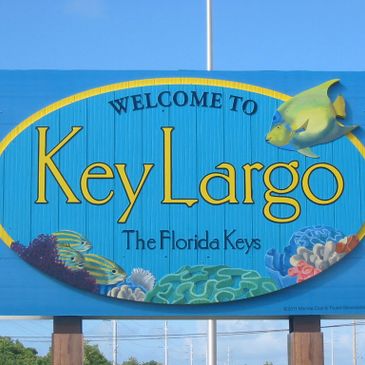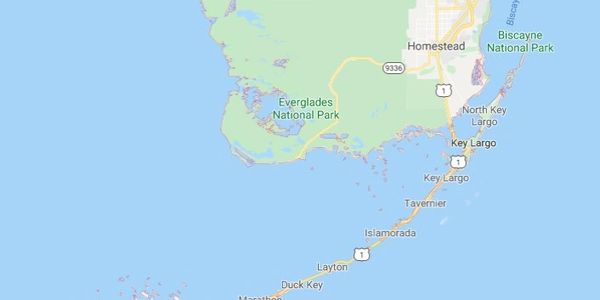Key Largo to Key West - The Southermost Point in the US. Monroe County, Florida
Where Are We?
Key Largo, Florida

Located approximately 50 miles south of Miami, Key Largo is the beginning of the island chain known as the Florida Keys. There are over 1700 small islands of which only 30 or so are populated. Connected by 43 bridges, the "Keys" stretch 106 miles from Key Largo to Key West.
David L. Jones, AIC, SCLA

All Lines Claims Adjuster
20 years experience
Associate in Claims
Senior Claims Law Associate
Licensed and Insured
Key West, Florida

Most locations in the Florida Keys are annotated by "mile marker" (aka mm) along US 1 starting in Key Largo at mm 106 and ending at mm 0 in Key West. At this point, you are closer to Cuba than you are to Miami.
Unique Features of the Florida Keys, Monroe County

Claims Efficiency
I am located in Key Largo making it easier and more efficient to provide claims inspection services in Monroe County. The average drive time for someone located in Miami to Key Largo is approximately 1 1/2 hours. From Key Largo to a claim in Key West is another 2 1/2 hours. An adjuster from Miami would spend approximately 7-8 hours (330 miles) round trip, not including time for inspection.

Underground Cisterns
Natural fresh water sources are rare in the Keys. Dating back to the late 1800's, many of the older homes and businesses, especially Key West, were built on top of water cisterns to collect rain water to be used for the fresh water supply. My inspection photos below show how the front porch and porch roof supports collapsed into the old cistern.
Historic District Key West Home
Cistern under dwelling and front porch.
Front porch under roof.
Concrete porch slab collapsed into cistern.
Porch roof
Porch roof support posts compromised.
West Martello Tower
Built by the US military as a defensive fort, two small guns were installed. The tower was used during the Spanish American War for quartering troops, storage, signaling and lookout. During World War II, it was used for radio stations and as an anti-aircraft battery. Now the home of the Key West Garden Club, the 4,100 gallon cistern underneath is used in the gardens.
Casa Marina Hotel
Built in 1922 by Henry Flagler, who built the railroad from Miami to Key West, sits above a 100,000 gallon cistern. The cistern is now used to irrigate the hotel grounds.
1800 Atlantic Blvd Condos
110,000 gallon cistern under the condo buildings used today for grounds watering.

Remote Islands
Although the majority of the 100 islands of the Florida Keys are connected by 42 bridges, there are still some inhabited islands that are assessable only by boat. Photos below are from a Hurricane Irma claim I inspected on Cook Island.
Cook Island

Boat and captain hired to transport me to the island after Hurricane Irma.
Approaching Cook Island
Developed homes face east facing the Atlantic Ocean.
Beach landing
Area suffered a direct hit from Irma.
Condo Hotels
Although not unique to the Florida Keys, many of the condo associations allow short term (transient) rentals by the month, week, and some even by the day. Most of the unit owners live elsewhere and use the services of a rental management company. Some popular units are booked out a year in advance. This shortens the available window for inspection and requires coordination with the condo association, property manager, owner and/or tenant.
Photo is of Ocean Point of Key Largo

Mandatory conversion from septic to sewer system
Prior to a law signed by Gov. Jeb Bush in 1999, ALL properties in Monroe County had septic tank system. Mandatory destruction of septic tanks and connection to the county sewer system was set for 2010 and later extended to 2015. All older plumbing from homes and businesses were required, at owner's expense, to be connected to the sewer lines.

Roofing
The county attempted, and failed, in 2017 to pass and ordinance requiring all roof replacements to be of metal roofing. There remain some homes with shingled roofs. Most homes and businesses have metal roofing. Some homes are of concrete block construction with a flat or gabled concrete slab roof.
All photos captured with my drone.
Metal Roofing

The vast majority of dwellings and building have metal roofing.
Concrete Roof

Gable concrete slab roof on block home.
Roofing
Few remaining shingled roofs.

Changes to FEMA Flood Zones
On December 27, 2019, Federal Emergency Management Agency (FEMA) released new PRELIMINARY coastal flood maps to Monroe County staff. These maps, after a multi-year study of Monroe County’s coastal flood risks and an extensive vetting process, will eventually replace the current flood maps which are based on 30-plus-year-old studies. This is intended to help homeowners understand that what they might be proposing to build today, under the existing flood maps, could become non-conforming after the maps are changed, thereby making their flood risk and insurance costs greater. The final FIRMs will most likely become effective sometime in 2021-2022.
When that happens, the county will formally adopt the maps by ordinance and the maps will be used when reviewing permits and the final maps will establish what a finished floor elevation needs to be and determine building and site design requirements to reduce future risk of flooding. New lender requirements may go into effect, flood insurance requirements, as well as changes in flood insurance rates as result of map changes.
http://www.monroecounty-fl.gov/1151/New-Preliminary-Coastal-Flood-Maps